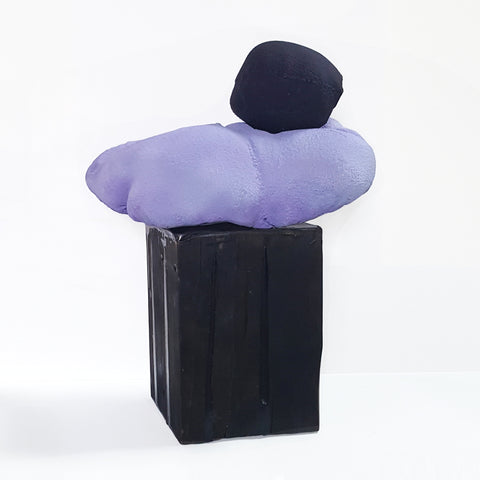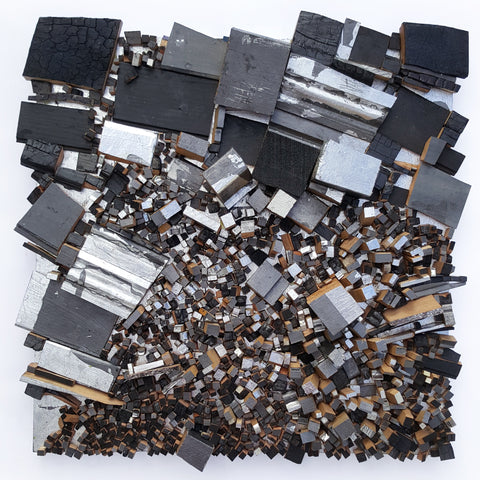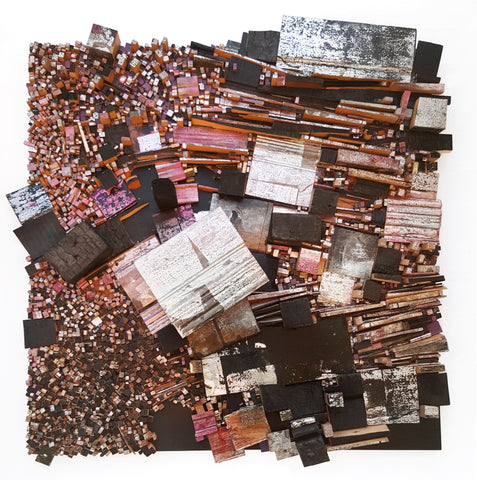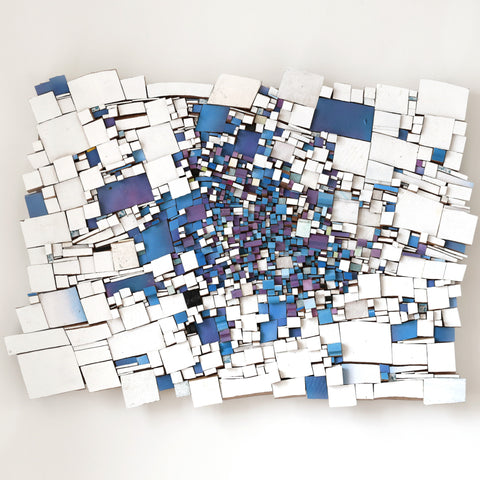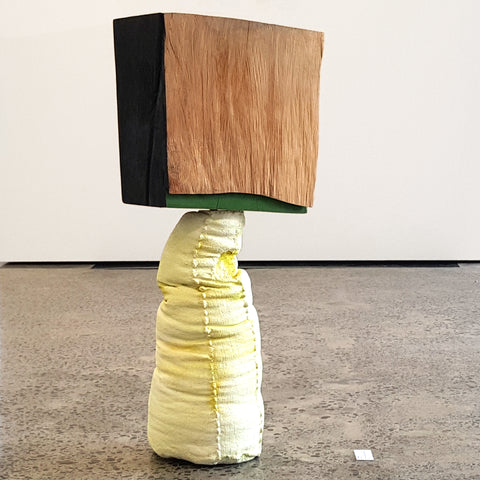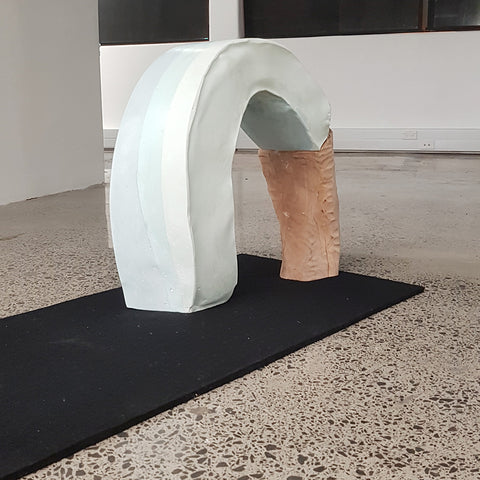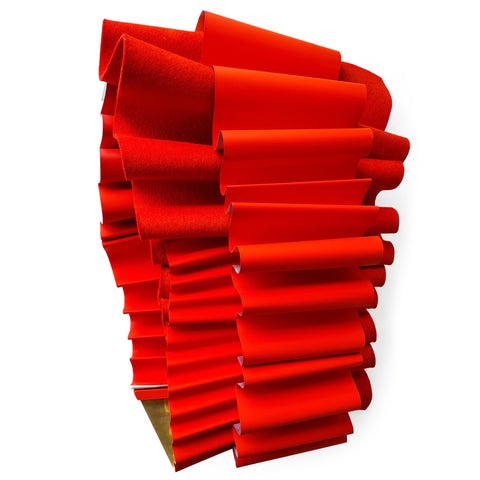Louise McRae
Louise McRae’s sculptural, wall-based assemblages bring discarded building materials and the debris of her rural environment into new frames of reference. McRae’s practice involves painting upon scrap timber which she then splits into shards and reassembles into matrixes of varying shapes and formats. Though the physical labour involved in making these works is undeniable, the works also have a quality of self-generation: shards congregate and tessellate as though they have floated into their respective positions. The works swell with movement and colour.
More recently, McRae has been making stacks of imperfect polyhedrons and biomorphic forms in columns or groups. Cubes, spheres and blobs are are chain sawed from wood or cast from concrete. Some elements are painted, others rasped or charred with a flame; the natural characteristics of the materials remain evident. Together they form singularly unmonumental monuments which teeter on the edge of collapse. These works serve as symbols for the tipping points for our social, political, financial and environmental structures which are in similarly precarious states. But McRae recognises that moment of collapse as a moment to embrace; it is, after all where opportunity lies.
- Page 1 of 2
- Next

